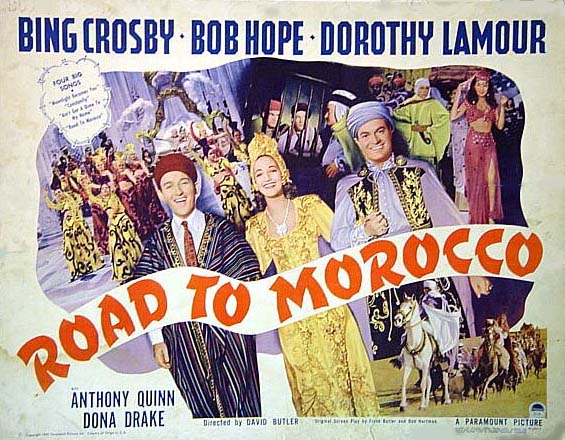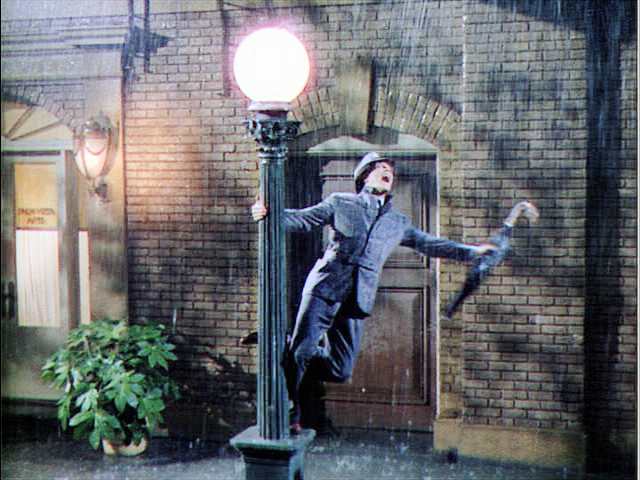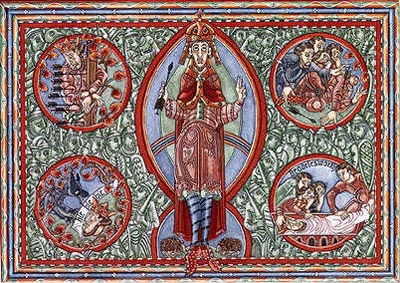 Psychology, Social Studies
Psychology, Social Studies  3 Comments
3 Comments Autism Acceptance Month: Resources for Autistics and Allies
 Today is World Autism Awareness Day, but autistics and many concerned advocates have done a great job of rebranding it as Autism Acceptance Day/Month. What’s the difference, you may ask? To many neurodiverse people, “awareness” and “acceptance” are as far apart as “tolerance” and “equality.” We don’t want past and current generations of people who are differently wired than our neurotypical family and friends to just subsist on the fringes until a “cure” is found for those not yet diagnosed (or even born).
Today is World Autism Awareness Day, but autistics and many concerned advocates have done a great job of rebranding it as Autism Acceptance Day/Month. What’s the difference, you may ask? To many neurodiverse people, “awareness” and “acceptance” are as far apart as “tolerance” and “equality.” We don’t want past and current generations of people who are differently wired than our neurotypical family and friends to just subsist on the fringes until a “cure” is found for those not yet diagnosed (or even born).
But many of those neurotypical allies don’t really know where to begin when faced with the complex spectrum of autism-related traits and patterns, and I know they’d be genuinely mortified if they grabbed the wrong end of the facts and proceeded as informed.
So here’s a very short, very subjective list of places you can go to experience some of the range and diversity of autism. If you’ve found something you feel should be on this list, please leave it in comments! I’m always on the lookout for new resources! And if you don’t know where something you’ve come across fits on the range of positive voices, please don’t feel embarrassed to ask–wanting to be informed is the first and most important step for any ally of any kind.
Filmography
The documentary Loving Lampposts, available on instant Netflix in at least the U.S., does an excellent job of approaching its autistic subjects with sensitivity and a willingness to truly hear their experiences. I especially appreciated that it included role models who are non-verbal, showing the brilliant thoughts that speech alone is incapable of capturing for them.
The only “fictional” movie I’ve seen that does a good job with autism is the HBO docudrama Temple Grandin (based on the real life of the autism pioneer), but two TV shows, Parenthood and Alphas, portray their autistic characters in ways that have made me gasp, laugh, and cry with recognition and gratitude. Many people cite the new BBC series Sherlock for the Asperger’s-like characteristics the title character shows, but given his other egomaniacal and insensitive traits, he’s not exactly what I’d call a role model, no matter how brilliant he is.
Bibliography
There’s a wide and diverse array of books out there about autism, but I’m only going to recommend the ones I’ve personally read. A few are fiction, but most are memoirs of one kind or another. It’s amazing to see your own life in print without having written a word. And in general, while autistics have found many ways to manage their symptoms and concurrent problems like food allergies or other medical issues, back away slowly from any book that talks about “preventing” or “curing” autism.
The Speed of Dark by Elizabeth Moon
The Curious Incident of the Dog in the Night-Time by Mark Haddon
Look Me In The Eye: My Life with Asperger’s by John Elder Robison (he’s written two more memoirs since, and I assume they’re just as good as his first)
The Journal of Best Practices: A Memoir of Marriage, Asperger Syndrome, and One Man’s Quest to Be a Better Husband by David Finch (he too has written successive books that I intend to get to in my Pile o’Shame)
If you only read one book on this list, read Loud Hands: Autistic People, Speaking, an anthology edited by Julia Bascom.
If you only read one author at all, read anything you can get by Dr. Temple Grandin.
Organizography (yes, I’m starting to make up words)
A great alternative to Autism Speaks, which is to be avoided at all costs, is the Autistic Self-Advocacy Network (ASAN). Co-founder Ari Ne’eman works on behalf of the org to bring cases of abuse and discrimination to public attention, as well as to make autistic voices heard in the room for discussions of policy and programs all the way up to the federal level. Their motto is “Nothing About Us, Without Us,” and their website is a great resource for allies as well as autistic folks.
Both national and local branches of Autism Society are also generally positive, though some may be more or less dominated by parents and teachers of autistics, rather than autistics themselves. That’s something to gauge on your own; if you don’t hear from an autistic person within a few meetings or press releases, that may not be a great sign.
Blogography (that one may or may not be a real word by now)
The number of excellent autistic bloggers out there is too numerous for me to do justice to, but you may want to start with a group on Facebook or Twitter like ASAN, Autism Women’s Network, WrongPlanet.net, or The Thinking Person’s Guide to Autism. They boost signal on blog posts and articles from a lot of great authors, not least among them are: Julia Bascom, Steve Silberman, Emily Willingham, Ibby Anderson-Grace, Shannon Des Roches Rosa, Estee Klar, and Lydia Brown. I know I’m forgetting a ton of good ones, so start friending/following the ones you like, and they’ll lead you to more and better, I’m certain. That’s how I got started at least.
 But when tragedy strikes, as expected, in the movie, suddenly I’ve got a sobbing pile of six-year-old on my lap. His bony little shoulders are shuddering, and hot tears soak my collar. I stroke his hair and whisper to him that it’s okay, he’s safe, and I know it’s sad, but it’ll get better, until he slowly uncurls and starts watching again. He doesn’t leave the shelter of my arms until the credits begin to roll.
But when tragedy strikes, as expected, in the movie, suddenly I’ve got a sobbing pile of six-year-old on my lap. His bony little shoulders are shuddering, and hot tears soak my collar. I stroke his hair and whisper to him that it’s okay, he’s safe, and I know it’s sad, but it’ll get better, until he slowly uncurls and starts watching again. He doesn’t leave the shelter of my arms until the credits begin to roll. It happened when we went to see Chimpanzee at our favorite bargain theater last weekend. It happened when Claudia and Jamie spent their first lonely night in the Met, as I read From the Mixed-Up Files of Mrs. Basil E. Frankweiler. It’s happened at a variety of TV shows and movies at home.
It happened when we went to see Chimpanzee at our favorite bargain theater last weekend. It happened when Claudia and Jamie spent their first lonely night in the Met, as I read From the Mixed-Up Files of Mrs. Basil E. Frankweiler. It’s happened at a variety of TV shows and movies at home.
 1.
1.  2.
2.  3.
3.  4.
4.  5.
5.  6.
6.  7.
7.  8.
8.  9.
9.  10.
10.  11.
11.  12.
12. 
 Nightmares, though…nightmares are something else entirely. Sure, I had bad dreams when I was a kid. My grandparents took me with them to see
Nightmares, though…nightmares are something else entirely. Sure, I had bad dreams when I was a kid. My grandparents took me with them to see 








 Reviewers have widely panned the movie as a “
Reviewers have widely panned the movie as a “

